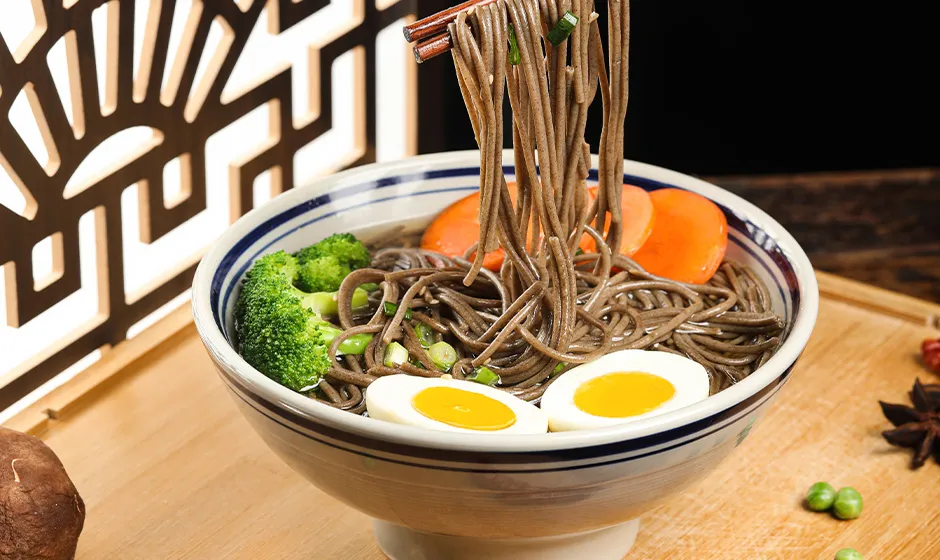chow mein egg noodles
The Delightful World of Chow Mein Egg Noodles
Chow Mein, a beloved dish in Chinese cuisine, has captured the hearts and taste buds of food enthusiasts around the globe. At the heart of this delectable dish are the versatile egg noodles, which elevate the experience to new heights. Let's delve into the history, preparation, and variations of Chow Mein egg noodles, as well as some tips for achieving the perfect dish at home.
A Brief History of Chow Mein
Chow Mein, translated literally as stir-fried noodles, has its origins in Chinese culinary traditions. The dish was brought to the United States by Chinese immigrants in the late 19th century. As it evolved and adapted to local tastes, it became a staple in Chinese-American cuisine. Today, Chow Mein has transcended its humble beginnings, becoming a popular meal not only in Chinese restaurants but also across various cultures and regions.
The Role of Egg Noodles
Egg noodles are a key component of Chow Mein. Made from wheat flour and eggs, these noodles have a rich flavor and a satisfying chewy texture that adds depth to the dish. Unlike other types of noodles, egg noodles are slightly thicker and can hold up well to stir-frying, making them ideal for this dish. Their golden hue and elasticity contribute to the visual and sensory appeal of Chow Mein, enhancing the overall culinary experience.
Preparing Chow Mein Egg Noodles
Creating the perfect Chow Mein begins with the preparation of egg noodles. While you can find pre-packaged egg noodles in stores, homemade versions offer superior taste and texture. To make homemade egg noodles, simply mix flour with eggs, knead the dough, and roll it out into thin sheets. Cut the sheets into strips, and your homemade noodles are ready.
Once the noodles are prepared, the next step is to cook them. Boil the noodles in lightly salted water until al dente, then drain and rinse them under cold water to stop the cooking process. This by itself can be a rewarding experience, but the true magic happens when you stir-fry the noodles with an array of ingredients.
Ingredients for Chow Mein
chow mein egg noodles

Chow Mein is highly customizable, making it easy to cater to individual tastes and dietary preferences. Traditional ingredients include julienned vegetables such as bell peppers, carrots, and bean sprouts, alongside protein options like chicken, shrimp, or tofu. The key to a flavorful Chow Mein lies in the sauce, typically made from soy sauce, oyster sauce, and a hint of sesame oil.
To stir-fry the dish, heat a wok or a large frying pan over high heat. Add a little oil, followed by your choice of protein. Once it's cooked through, toss in the vegetables and stir-fry until they retain their crunch. Finally, add the cooked egg noodles along with the sauce, and stir everything together until evenly coated.
Variations of Chow Mein
While the classic version of Chow Mein is delicious, there are numerous variations to explore. For example, Lo Mein is a closely related dish that features softer, boiled noodles instead of stir-fried. Additionally, you can play around with different sauces and ingredients, such as using teriyaki sauce for a sweeter flavor profile or incorporating seasonal vegetables to reflect local produce.
Tips for the Perfect Chow Mein
To achieve the best Chow Mein at home, consider these tips
1. High Heat Always cook on high heat to achieve that signature wok hei (wok breath) flavor. 2. Prep Ahead Prepare all ingredients in advance so that the stir-frying process is quick and smooth. 3. Don’t Crowd the Pan Cook in batches if necessary to ensure the noodles and vegetables have enough space to stir-fry properly.
Conclusion
Chow Mein egg noodles are a delightful centerpiece in a dish that is as versatile as it is delicious. By understanding the history, preparation, and variations of Chow Mein, you can embark on a culinary journey that speaks to the rich traditions of Chinese cuisine. Whether enjoyed at a restaurant or crafted at home, Chow Mein is sure to bring joy to your table. So grab some egg noodles, fire up the wok, and let the delicious adventures begin!
-
Unleash Your Inner Chef with Delectable Italian Pasta CreationsNewsAug.01,2025
-
Savor Health and Flavor: Irresistible Soba Noodles for Sale Await!NewsAug.01,2025
-
Nourish Your Body with Premium Organic Ramen - A Culinary Delight AwaitsNewsAug.01,2025
-
Elevate Your Dishes with Our Exquisite Kinds of Egg NoodlesNewsAug.01,2025
-
Dive into Flavorful Convenience with Our Ramen OfferingsNewsAug.01,2025
-
Discover Exquisite Types of Naengmyeon and Chilled Soba NoodlesNewsAug.01,2025
-
Is Whole Wheat Pasta Healthy?NewsMay.30,2025
Browse qua the following product new the we

















































































































